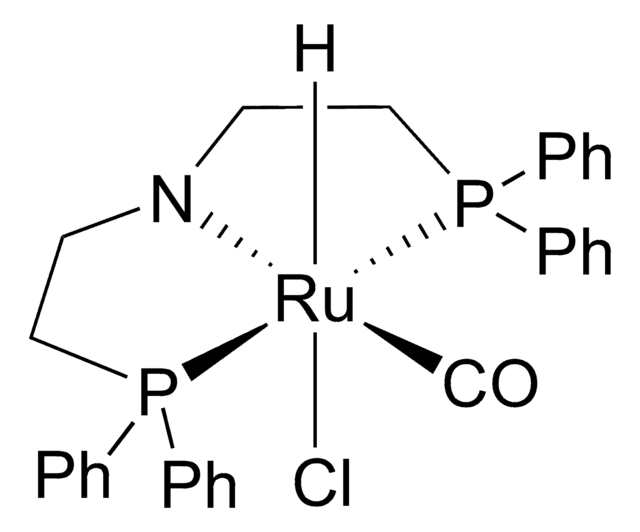701920
2-((Di-tert-butylphosphinomethyl)-6-diethylaminomethyl)pyridine
Synonyme(s) :
PNN
Sélectionner une taille de conditionnement
324,00 $
Sélectionner une taille de conditionnement
About This Item
324,00 $
Produits recommandés
Forme
liquid
Niveau de qualité
Capacité de réaction
reaction type: Buchwald-Hartwig Cross Coupling Reaction
reaction type: Heck Reaction
reaction type: Hiyama Coupling
reaction type: Negishi Coupling
reaction type: Sonogashira Coupling
reaction type: Stille Coupling
reaction type: Suzuki-Miyaura Coupling
Pertinence de la réaction
reagent type: ligand
Indice de réfraction
n20/D 1.519
Densité
0.936 g/mL at 25 °C
Groupe fonctionnel
phosphine
Chaîne SMILES
CCN(CC)Cc1cccc(CP(C(C)(C)C)C(C)(C)C)n1
InChI
1S/C19H35N2P/c1-9-21(10-2)14-16-12-11-13-17(20-16)15-22(18(3,4)5)19(6,7)8/h11-13H,9-10,14-15H2,1-8H3
Clé InChI
MTBWGMDPQBSPGF-UHFFFAOYSA-N
Catégories apparentées
Mention d'avertissement
Warning
Mentions de danger
Conseils de prudence
Classification des risques
Aquatic Chronic 4 - Eye Irrit. 2 - Skin Irrit. 2 - STOT SE 3 - Water-react 3
Organes cibles
Respiratory system
Code de la classe de stockage
4.3 - Hazardous materials which set free flammable gases upon contact with water
Classe de danger pour l'eau (WGK)
WGK 3
Point d'éclair (°F)
154.0 °F
Point d'éclair (°C)
67.8 °C
Équipement de protection individuelle
Eyeshields, Faceshields, Gloves, type ABEK (EN14387) respirator filter
Faites votre choix parmi les versions les plus récentes :
Certificats d'analyse (COA)
Vous ne trouvez pas la bonne version ?
Si vous avez besoin d'une version particulière, vous pouvez rechercher un certificat spécifique par le numéro de lot.
Déjà en possession de ce produit ?
Retrouvez la documentation relative aux produits que vous avez récemment achetés dans la Bibliothèque de documents.
Active Filters
Notre équipe de scientifiques dispose d'une expérience dans tous les secteurs de la recherche, notamment en sciences de la vie, science des matériaux, synthèse chimique, chromatographie, analyse et dans de nombreux autres domaines..
Contacter notre Service technique










